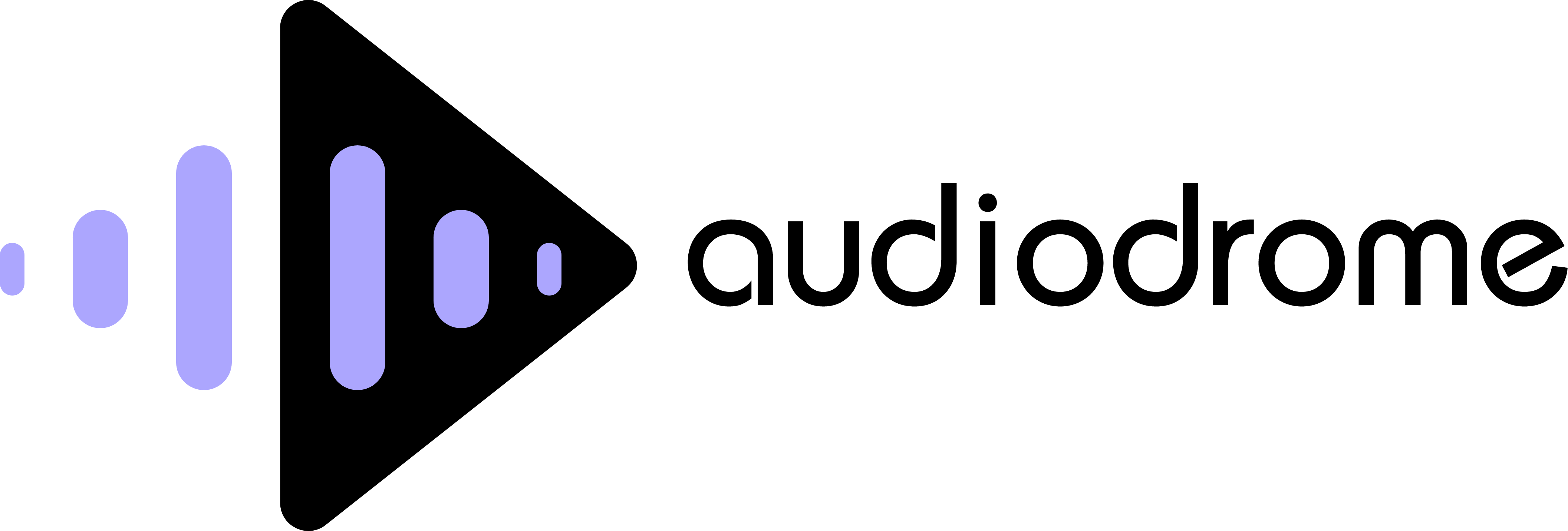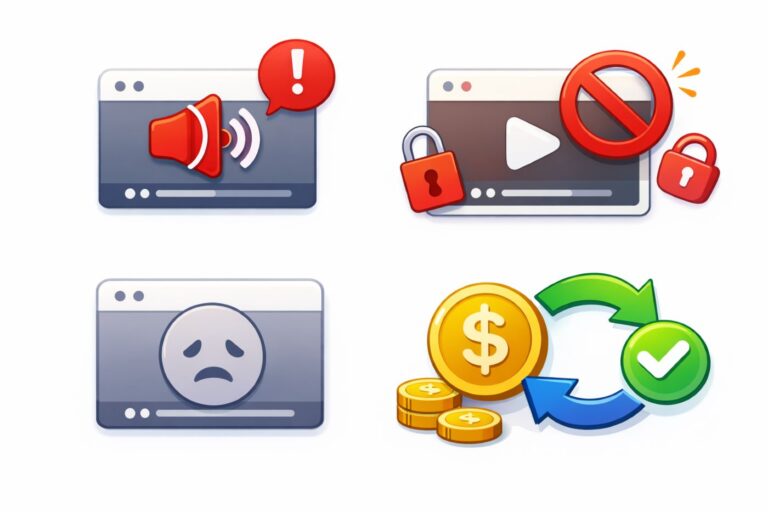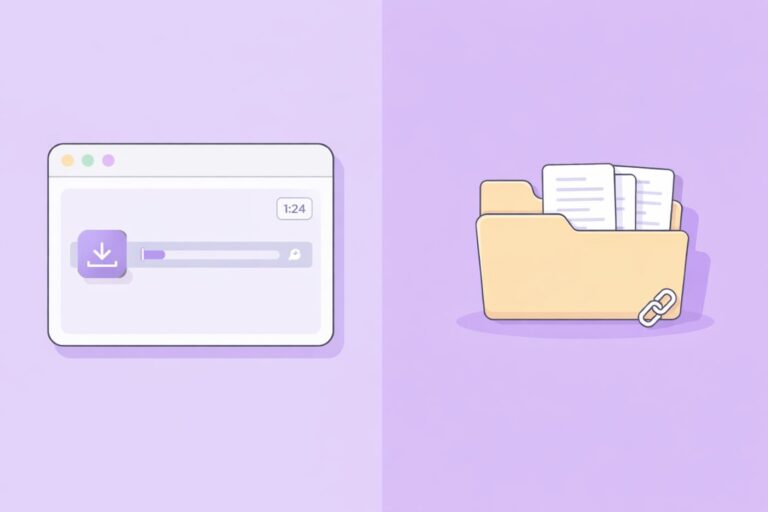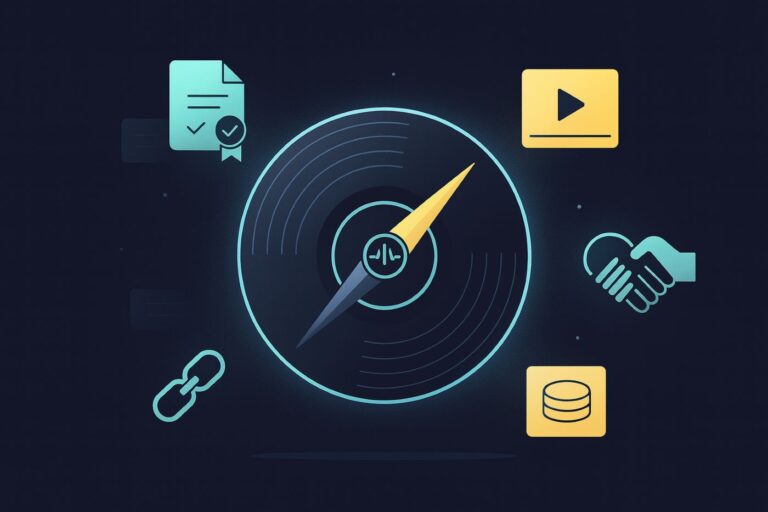Why Royalty-Free Music for YouTube Is a Better Option Than the Built-In Libraries
Audiodrome is a royalty-free music platform designed specifically for content creators who need affordable, high-quality background music for videos, podcasts, social media, and commercial projects. Unlike subscription-only services, Audiodrome offers both free tracks and simple one-time licensing with full commercial rights, including DMCA-safe use on YouTube, Instagram, and TikTok. All music is original, professionally produced, and PRO-free, ensuring zero copyright claims. It’s ideal for YouTubers, freelancers, marketers, and anyone looking for budget-friendly audio that’s safe to monetize.
YouTube’s Audio Library, Creator Music, and royalty-free catalogs play by different rules. This guide decodes monetization vs commercial use, region limits, Shorts gaps, and ad caveats so you can ship clean uploads, avoid claims, and choose the right license for every platform.
What each option actually is
YouTube Audio Library lives inside Studio and offers free production music and sound effects. Each track shows a License type with clear rules such as attribution required or Creative Commons. Off-YouTube reuse depends on the specific license for that track.

YouTube Creator Music offers commercial songs for long-form videos. You either share ad revenue on eligible tracks or buy a per-video license. Creator Music does not cover Shorts or live streams. Plan Creator Music only for standard watch-page uploads.

Shorts include an in-app Sounds library. When you create a Short, tap Add Sound to choose from available tracks in the YouTube app. This flow sits inside the Shorts camera and lets you pick music during creation without separate licensing steps.

Royalty-free third-party libraries provide pre-cleared catalogs you license directly. Many now support YouTube channel allowlisting or safelisting to prevent claims and issue license certificates you can keep for audits.






Cross-platform consistency
YouTube Audio Library has two license types. The “Audio Library License” covers use in your YouTube videos, including monetized uploads, and it does not state a cross-platform right, so off-YouTube use is not guaranteed. “Creative Commons Attribution 4.0” allows off-YouTube use when you include the exact credit shown in the panel.

Creator Music licenses are not transferable to other platforms or other YouTube channels. Creator Music licenses can be transferred to other videos within a YouTube channel if they haven’t already been used in a published video.

Royalty-free third-party libraries often grant multi-platform, worldwide rights. Audiodrome grants a non-exclusive worldwide perpetual license for Projects with platform monetization across YouTube, Instagram, TikTok, websites, and apps when the music stays embedded in the Project. Subscription libraries such as Artlist and Soundstripe also permit multi-platform use while your plan is active.

Works for Shorts & Live uniformly
You can use YouTube Audio Library tracks on YouTube uploads – shorts, long-form videos, and live streams. Each track shows a License panel with rules you need to follow. Creative Commons items require credit.
Creator Music serves long-form videos on the standard watch page, and it does not support Shorts or live streams. Plan Creator Music for long-form only and choose another path for live and short vertical videos.

Royalty-free libraries often grant multi-platform rights when the license says online video or lists specific platforms. Audiodrome allows shorts, stories, and live or recorded streams on YouTube, Twitch, Facebook, Instagram, and TikTok under the permitted uses. Subscription platforms document coverage for social and streaming during an active plan, subject to plan limits and any registration tools the vendor requires.

Multiple projects vs single-use friction
YouTube Audio Library tracks can be reused in your YouTube videos when you follow each track’s License rules.

Creator Music ties usage to a single upload. You either buy a per-video license for a track or opt into per-video revenue sharing on eligible music.

Audiodrome defines the Project clearly and permits multi-client work when each client receives a copy of the license, which reduces re-licensing back and forth. Royalty-free libraries often let you cover many projects during an active subscription, and vendors also sell single-track licenses for one-off needs. Epidemic’s subscription covers use across social platforms, and its Single Track License is designed for a single video across multiple platforms.

Global scope (geo-blocks)
The Audio Library License has no global restrictions and supports use worldwide on YouTube. Off-platform reuse depends on the license shown for each track, so confirm any attribution or reuse rules before distributing the same cut to other channels and services.
Designed around long-form watch-page videos, Creator Music usage can vary by track and region. “Supported regions” defines where a licensable track may be used, and restrictions can appear. If you choose revenue sharing instead of licensing, usage may be limited to territories where revenue sharing is available.
%201.jpg)
Royalty-free vendors often publish license terms that say worldwide use. Audiodrome grants worldwide rights with no platform or channel caps in the delivery notes. Subscription services describe worldwide coverage for Pro or business use, but scope remains tied to the subscription window and any plan-specific conditions that appear in the vendor license.
%202.jpg)
Commercial/ads & client work
Before explaining what is and isn’t allowed for commercial use of Audio Library tracks, it helps to distinguish monetization (platform payouts) from commercial use (the purpose of the video).
Monetization describes platform payouts. On YouTube, monetization means earning through YPP features on watch-page videos and the pooled Shorts model. It explains how money flows from YouTube to you, not the purpose of the video. YouTube confirms that Audio Library tracks can be used in monetized videos. Google Help
Commercial use describes the purpose. It covers brand promos, client work, and ads made for commercial advantage. Creative Commons BY permits use for any purpose with attribution, which includes commercial contexts. Creative Commons
Tracks under the standard YouTube Audio Library license don’t have an explicit Google statement granting “commercial use”. The page confirms use in your videos and monetization but gives no off-platform or advertising grant. CC BY tracks do allow commercial use with proper attribution.

Creator Music is not suited for brand-led promos. YouTube prohibits using Creator Music tracks in videos that primarily endorse or promote a paying brand or service. Creator Music is designed for long-form only, and Shorts and live formats are excluded from permitted use.

Royalty-free libraries aim at commercial work. Audiodrome permits ads, corporate content, e-learning, and multi-client deliverables when each client receives this license. Subscription platforms’ Pro plans document commercial and client use across social, TV, streaming, and film while your plan is active, so timing and scope still matter.

Formal license artifacts (audit trail)
YouTube Audio Library shows license details in Studio and on the watch page under “Music in this video.” You cannot download a per-track certificate. Keep dated screenshots of the License panel and any attribution text you used to preserve an audit trail.
Creator Music allows you to obtain a paid license inside Studio during or after upload on eligible tracks. You cannot download a PDF license, but track usage details, receipts, and license identifiers appear in Studio. Save copies of those records for your internal compliance files.
Royalty-free vendors provide exportable paperwork. Audiodrome emails a manually signed agreement at purchase that you can store for audits. Subscription platforms let you download license documents and asset certificates from the account area during an active plan, which you should save before your subscription ends.
Protection from rightsholder policy swings
YouTube Audio Library terms appear per track in Studio and may change as availability updates. For Creative Commons tracks, keep the exact attribution wording and state any edits you made. Retain dated screenshots of the License panel for every track you rely on.

Creator Music usage terms come from rightsholders and can change over time. It is long-form only, with eligibility and supported-region differences across tracks. Recheck usage details in Studio before publishing so you do not rely on terms that have since changed.

Royalty-free vendors bind usage to the license you acquire at download. Audiodrome fixes your rights at purchase for the covered Project and states perpetual terms. Subscription platforms keep already published projects licensed after your plan ends, but uploads after expiry are outside scope and can trigger claims unless the license is active.
Eligibility/availability hurdles
YouTube Audio Library is available in Studio without joining the Partner Program. You can browse, filter by license type, and download MP3 files for use in videos on your channel, making it simple to test cuts in drafts and iterate before publishing.
Creator Music is rolling out to eligible Partner Program creators. Access and catalog availability vary by country, account status, and track rights. Not all creators have access yet, and eligible creators may see different options depending on their location and channel history.

Royalty-free libraries sell access without YPP. You sign up for a subscription or buy single-track licenses, then download and use music under the vendor’s terms. Epidemic offers creator subscriptions. Audiodrome and PremiumBeat sell per-track licenses. This path opens to new channels, agencies, and brands immediately.
Edits, cuts, loops & stems (speed of fit)
YouTube Audio Library permits editing and looping based on the track’s license. The Library license does not restrict alterations. Creative Commons BY tracks require credit and ask you to state if you changed the audio, so include that note in your video description.
%201.jpg)
Creator Music does not allow fundamentally altering the track. You can trim starts and ends for timing, but no remixing, reversing, or stem-level changes. Keep the musical work intact so the license or revenue-share terms remain valid for the intended video format.
%202.jpg)
Royalty-free vendors often ship editor-ready deliverables. Audiodrome permits editing, looping, fades, and other adaptations within a Project. Subscription libraries often include downloadable stems and alternates to speed the picture edit.
%203.jpg)
File formats & fidelity (MP3 vs WAV, stems)
YouTube Audio Library provides MP3 downloads in Studio for quick use and smaller file sizes. There is no WAV delivery, so plan your mastering and loudness strategy around MP3 sources when you cut loops or transitions for longer edits on watch-page videos.
%201.jpg)
Creator Music lives in YouTube Studio and lets you browse, preview, and download songs for use in your YouTube videos when the track is licensable. Previews of some licensable tracks can be downloaded to test an edit before purchase, while tracks marked for revenue sharing cannot be downloaded.
Third-party royalty-free libraries commonly offer both WAV and MP3. Audiodrome delivers WAV downloads after checkout and keeps the links active for at least thirty days. Subscription platforms typically offer WAV or MP3 downloads and, in many cases, let you pull stems by part or as a complete set.
%202.jpg)
Cost & ROI Snapshot
Audio Library is free inside Studio. There is no license fee to recoup, so revenue equals RPM times views. Check the License type column for attribution rules on Creative Commons tracks. Downloads are MP3 files from the Library.
Creator Music applies to long-form videos. You can share revenue with rights holders or buy a per-video license. To model break-even, multiply RPM by expected views. Compare that figure with the license price, or estimate the impact of revenue sharing, which varies by track and region.

Audiodrome is a one-time per-track license with no revenue share and perpetual rights for the Project, per the Agreement you provided. Break-even equals the track price divided by expected RPM per upload. For subscriptions, break-even equals the monthly fee divided by total RPM across uploads.

Risk & Compliance Notes (practical)
Audio Library. Record the track name, the license type, and the attribution requirement as shown in the License panel. Keep a dated screenshot of that panel for your records, since permissions and availability notes can change. Follow the Creative Commons credit format when required.
Creator Music. State if you used a paid license or revenue share, and record the track’s Usage details. Record any region or availability notes that appear on the track page. Recheck terms before publishing because options vary by song and location. Keep proof with the video file.
Royalty-free. Download and archive your license PDF or receipt for each project so you can prove rights during a claim. If your vendor offers channel or video allowlisting, register client channels before upload. Disputes on YouTube should include your license documentation as evidence.
Cut Clean, License Smart
Match the license to the job, not the hype. Use Audio Library for YouTube videos you control, Creator Music for cleared long-form watch-page use, and royalty-free when you need global, multi-platform coverage. Keep dated proofs, read per-track terms, and avoid assumptions that turn into claims.

Audiodrome was created by professionals with deep roots in video marketing, product launches, and music production. After years of dealing with confusing licenses, inconsistent music quality, and copyright issues, we set out to build a platform that creators could actually trust.
Every piece of content we publish is based on real-world experience, industry insights, and a commitment to helping creators make smart, confident decisions about music licensing.












